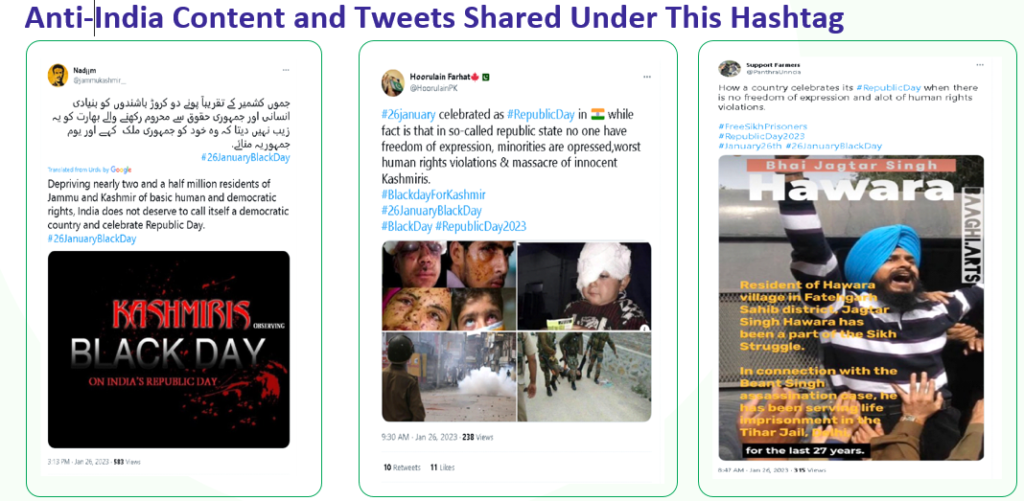ISPR: An Insight Into Pakistan’s Disinformation Machinery

“War is 90% Information”
– Nepolean Bonaparte.
If anything one learns from the history of warfare, it is that conflicts are not just waged with weapons but also with information. And the side that was able to influence the information flow came out on top. This basic understanding forms the cornerstone of modern fifth-generation hybrid warfare. In the contemporary environment, countries are fighting wars of “information and perception.” The concept of hybrid warfare, though it existed in the ancient world, became a major pillar of warfare after World War 2. Chief Nazi propagandist Paul Joseph Goebbels is said to be the pioneer of modern information and perception warfare. His lead was later followed by other world powers. Today, every major world power has its own institution for disseminating and discrediting information. China has “Global Times,” the UK has “BBC,” Qatar has “Al Jazeera,” etc. These institutions work hand in hand with the state and toe its line.

Pakistan, after getting decimated repeatedly on the battlefield, learned that it simply couldn’t win direct wars with India. Therefore, it switched to the digital battlefield, where it launched a disinformation offensive against the Indian state. These propaganda operations through mainstream and social media are conducted and coordinated under a single umbrella called the ISPR. ISPR stands for Inter-Services Public Relations. Like every other institution in Pakistan, ISPR too is controlled by Pakistan’s army and ISI. In this article, we are going to throw some light on the working, motives, capacity, and efficacy of the Pakistan Army’s propaganda arm, Inter-Services Public Relations (ISPR).
EMERGENCE & OBJECTIVES OF ISPR (INTER-STATE PUBLIC RELATIONS)
Inter-State Public Relations (ISPR) was established in 1949 with Colonel Shahbaz Khan as its first director general. Officially, it operates as the media arm of Pakistan’s military, which includes the army, air force, navy, and marines. The ISPR oversees the military’s need for public relations and is manned by both military and civilian officers. It operates from the Joint Staff Headquarters (JS HQ), Rawalpindi. Currently, ISPR is headed by its 22nd DG, Major General Ahmed Sharif Chaudhry. The primary objective of ISPR is to provide accurate and timely information to the public about the Pakistan Armed Forces, counter negative propaganda and misinformation, and build a positive image of the Pakistan Armed Forces among the public. Though on paper ISPR seems to be just the media wing of Pakistan’s army, its true objective is far more than just a PR agency.

Since its inception, Pakistan’s deep state has been cautious about the evolution of media and its role in modern society. They realized the true potential of media in shaping domestic narratives. Therefore, it was pertinent for the army to control the media flow to ensure its stronghold over Pakistan remains unruffled. The free flow of media has always been a threat to dictators and their regimes throughout the world. Army dictators in Pakistan were aware of this fact and established ISPR as a regulatory authority for free media. The credit goes to Pakistan’s deep state because they realized the potency of the media far earlier than Indian policymakers. Over the years, the scope and influence of ISPR have expanded multifold. Today, ISPR not only controls the media but also regulates its movies and dramas and acts as a fountainhead of anti-India propaganda.
ISPR’S ROLE IN STIFLING CONTROL OVER MAINSTREAM MEDIA
In Pakistan, the ISPR serves as the primary media oversight body. In other words, ISPR directs how and what content is published by the mainstream media. “It’s either my way or the highway,” to put it simply, sums up ISPR’s media strategy. It also offers an alternative option of “skyway,” aka “trip to heaven,” aka “death”. Anyone who refuses to follow ISPR’s orders risks being sacked, abducted, or killed. Together, ISPR and ISI employ coercive tactics and target journalists who disobey orders.
A few examples are as follows:
Matiullah Jan

Journalist Matiullah Jan, who was often critical of the Army, was abducted in Islamabad on July 21, 2020, in broad daylight. He was later released after 12 hours. He was abducted from one of the most sensitive areas in the federal capital, but the whereabouts of his abductors remain unknown to this day. Although there is an underlying consensus in Pakistan that this was a coercive maneuver by the ISPR, Matiullah was given the warning to submit.
Hamid Mir

On April 19, 2014, Hamid Mir, a renowned journalist and a fierce critic of Pakistan’s army, was shot multiple times. This happened a month after he met with Pakistani Prime Minister Nawaz Sharif and raised concerns regarding deteriorating press freedom. He took six bullets—in the ribs, thigh, stomach, and across his hand. Mir blamed agencies (ISI, the army) for the attack. Before this attempt, he had been threatened by ISPR with dire consequences on multiple occasions.
Amir Mateen

On July 22, 2022, renowned journalist Amir Mateen raised his voice on social media against the ISPR. He called out how ISPR controls, coerces, and harasses journalists and passes diktats to media houses. Mr. Amir also stated how he was kicked out of his job for not kneeling before the ISPR and defying its orders. He also raised concerns regarding a lack of accountability and withering media freedom in the country.
Amir Mateen tweets regarding the control of ISPR on media in Pakistan.


ISPR’S ROLE BEHIND DISINFORMATION AGAINST INDIA
ISPR, being an extension of Pakistan’s army, is also infected with its Kashmir obsession. To fulfill its Kashmir wet dreams, it keeps on peddling fake narratives using social media and other means. One such plot was busted during India’s Republic Day on January 26, 2023. When Indians from Kashmir to Kanyakumari were celebrating with nationalist fervor, ISPR was peddling its tawdry toolkit. A fictitious campaign was launched with the hashtag #26JanuaryBlackDay to divert the attention of our country and people worldwide from Republic Day. The location of this campaign is identified as J&K and Punjab, two target states for the anti-India campaign. But the majority of the tweets came from Pakistan. This campaign was pushed by several bot accounts created by ISPR to carry out disinformation operations against India.


Toolkit Released By ISPR Against 26 January India’s Republic day.

A Fake Pakistani bot account posted a fake picture of a woman from the 2016 Quetta terror attack as a Kashmiri woman mourning the death of her son, killed by Indian forces.

This wasn’t the first time ISPR launched a fake narrative campaign against India. Time and again, India foiled its shoddy attempts to destabilize and defame it. Even social media platforms took action against Pakistani bot accounts that indulged in disinformation campaigns against India. After the abrogation of articles 370 and 35A, there was a sudden hike in Twitter bot accounts created by ISPR. Twitter took due notice and blocked 200 such bot accounts peddling fake news regarding Kashmir. These disinformation campaigns involve a well-coordinated push by bot accounts for a certain narrative using doctored clips, fake images, and photoshopped news headlines masquerading as authentic information. All this is done to manufacture an artificial trend on social media that appears organic to the targeted audience.
Pakistani Journalist Calling Arshdeep Khalistani.

Pakistani bots created by ISPR peddle disinformation by calling Arshdeep Khalistani to create communal disharmony in India.

Not only regarding Kashmir but repeated attempts were made by ISPR to create communal disharmony in India. One such unscrupulous campaign was launched in 2022 during the Cricket Asia Cup. Indian star bowler Arshdeep Singh dropped a catch in the second match of India vs. Pakistan, Asia Cup 2022. Several Pakistani accounts started peddling Khalistani narratives, calling Arshdeep a Khalistani. The idea was to evoke communal sentiments against Sikhs and create a rift between communities in India. The attempt was to make Sikhs feel isolated. By portraying them in a bad light, they tried to cash in on the opportunity to strengthen the Khalistani narrative within India and abroad. Such attempts show the desperation of Pakistan’s deep state, as even sports were not spared from their cheap disinformation campaign.
Conclusion
It’s zero hours for India to actually prioritize its capacity building regarding information warfare. It goes without saying that India lags behind in the information domain vis-à-vis its adversaries, China and Pakistan. Although the Indian Army has its own media arm called ADG PI (Additional Directorate General of Public Information), it merely acts as an army news outlet. India needs a dedicated institution for discrediting any disinformation campaign launched from either Pakistan or China. The majority of fact-checking and debunking disinformation is currently carried out by individuals and independent OSINT (open-source intelligence) organizations. Though the army and policymakers have started taking the right steps, we still have a lot to catch up on in the information realm. India must prepare itself for any future conflict fought on both the real and digital battlefields.





